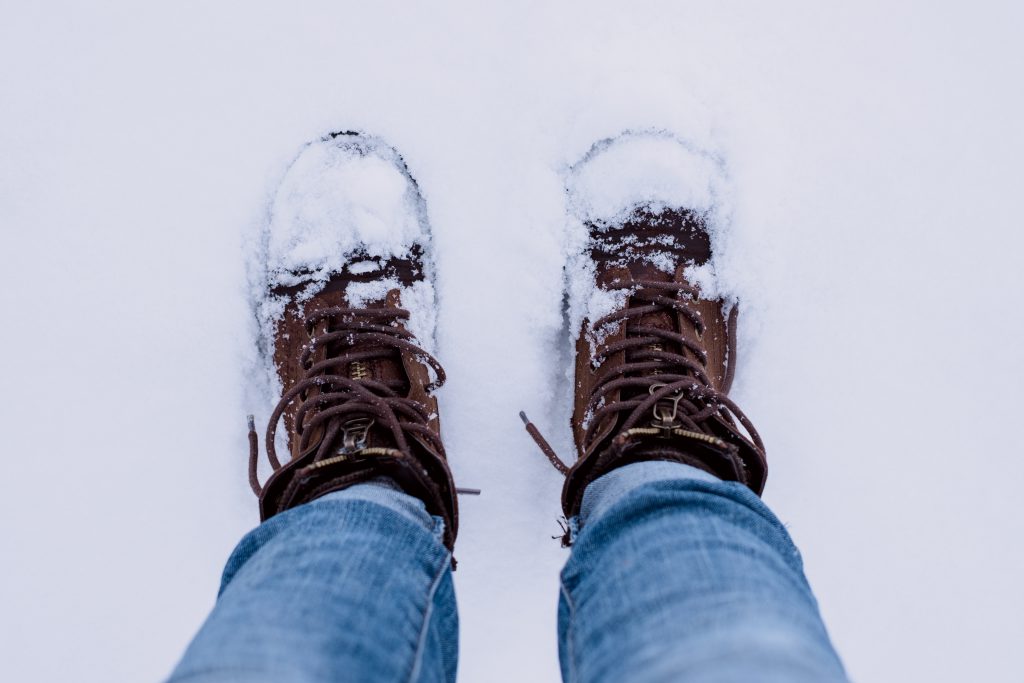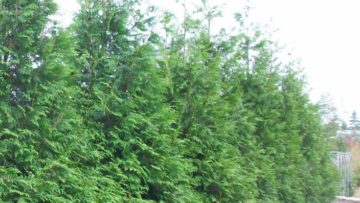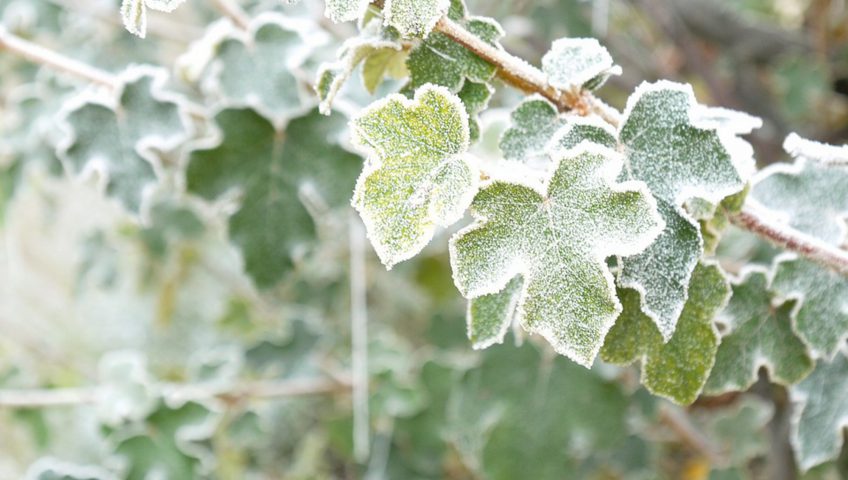One of the biggest benefits of planting with native or hardy plants is resistance to harsh winter conditions. However, even the best-suited plants can become damaged by harsh Northeast winters.
Pittsburgh residents are no stranger to these challenges, and neither are we. While potholes and gray skies get most of the attention, the stress of winter weather can be particularly harmful to plants — even those that are well-established and well-suited to the region.
We can’t control the weather, but we can adapt to it. Here, we’ll list five common types of winter plant damage, and how you can remedy those stresses and even avoid them altogether.
Salt Damage
If you’ve ever hit the streets ahead of the salt trucks, you know how slick our roads can become — and how unavoidable this problem is.
While our operators take care to avoid excess or wild salt applications, some bleeding of material into grass and planting beds is inevitable. This is especially true of landscapes that are downhill of large areas of pavement, where snowmelt carries residual salt with it.
The dispersion of salt into turf and planters is a double-whammy. Sodium inserts itself into the root area, displacing other essential plant foods like potassium and magnesium, while rock salt absorbs water and can lead to dehydration of the plants.
This results in visible damage, usually identified by a browning of grass or plants near roads and sidewalks. In plants, this can sometimes manifest itself in browning of the side of the plant facing pavement, where salt spray reaches leaves and stems.
Where possible, avoid salt use altogether. Burlap and plastic fencing can also help to avoid physical contact of salt to plants. Flushing planting beds with water after the snow season can also carry excessive sodium out of the soil, and de-icing agents such as calcium chloride are easier on plant life and effective on walkways that usually abut planting beds. Browned turf that has suffered salt burn may revive, but reseeding in spring time can help supplement its recovery.
Snow Plow Damage
This one is hard to miss. Big, bulky snow plows in front of big, bulky trucks can do a great excavator impression on turf — especially when that turf is hidden under the white stuff.
Snow plow damage usually looks like a bad golf game — big chunks of turf taken out of a lawn. While repairs in winter are limited to repairing your divot, the area can be easily fixed in spring with fresh soil and seed.
Damage can be avoided by planting bright snow markers in your turf before the winter freeze, helping signal to drivers where the pavement ends and your turf begins.
Winter Burn (Dessication)
Dessication, simply put, is the dehydration of plants. While all plants naturally release moisture into the atmosphere as they absorb it through the ground, wintry conditions can make dessication very common.
Winter burn is easy to identify, looking like it’s name. Usually found in evergreens, browning occurs on the needles or leaves of the plants as moisture escapes.
If the plants are rooted in frozen ground, they can fail to absorb moisture at the same rate they lose it to the atmosphere. This is exacerbated by dry, harsh winter winds, which help wick moisture out of the leaves even faster.
Anti-dessicant sprays can help coat the leaves with a waxy “shell” that prohibits evaporation. Piling the base of the plant with extra mulch will also help to retain moisture and provide insulation, guarding against root upheaval or root freezing.
Preventative care is the best option here. Once the needles or leaves have browned, the plant tissue is dead and can only be replaced by new growth.
Sunscald
Another freeze/thaw phenomenon, sunscald leaves its mark by splitting the tree bark wide open. This occurs on the side of the tree that receives a good amount of winter sunlight. This sunlight warms the bark and thaws it out, bringing the plant tissue out of dormancy. When temperatures fall and the bark refreezes, the exposed tissue is killed during the refreeze.
Eventually, this freeze/thaw cycle kills and splits open the bark, exposing the tree tissue to cold elements and allowing pests a way into the tree once winter has ended.
Wrapping young trees with plastic tree wrap (only through the winter) can help insulate against freeze/thaw, and deliberate pruning on older trees can also help to avoid needless exposure of cuts to changing temperatures.
Frost Heave
A soil issue, this is another problem brought on by the freeze/thaw process. As the ground freezes and expands, plants are brought upward with the expanding soil. When the ground thaws and recedes, lifted root structures remain closer to the surface. Eventually, this can bring the roots all the way to the surface, where they are exposed to freezing temperatures and may lose moisture.
Supplementing the soil with mulch can help retain moisture and insulate against deep freezing. Amending the soil in warmer seasons can also improve drainage and provide a stronger base for the plant roots to grab onto.
If frost heave has already occurred, mulch can still be applied during warm snaps to help insulate against further heaving.
Let us help your lawn recover from winter stress.
Sylvan Gardens can help you to avoid these common winter plant hazards. While winter is in full swing, it may not be too late to guard against these issues through the remainder of the season, giving your garden a chance to hit the ground running this spring.
More From Our Blog Read More

Deer-Tolerant Plantings for New Landscapes | Sylvan Gardens Plant Guides
Perhaps more than weather, pests and disease, deer present some of the greatest challenges for keeping a home landscape…
Read More
Living Walls | 8 Large Privacy Plants for Natural Barriers
At its best, outdoor living combines architectural structures with elements of the natural world. When looking to create…
Read More
Work Safety Practices During COVID-19
To our customers, As some of you may have noticed, our crews are on the road and working in your neighborhoods. As an…
Read More